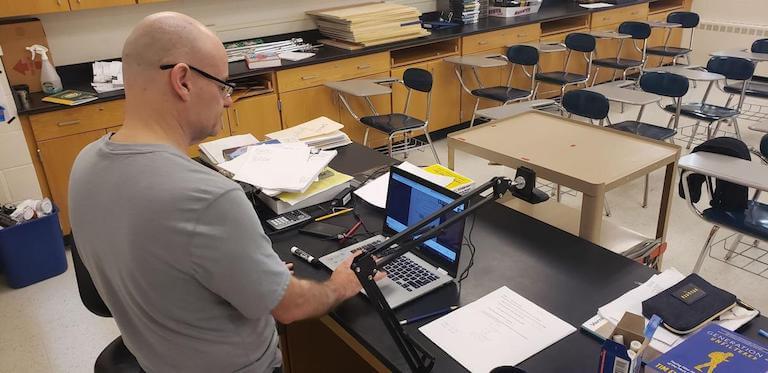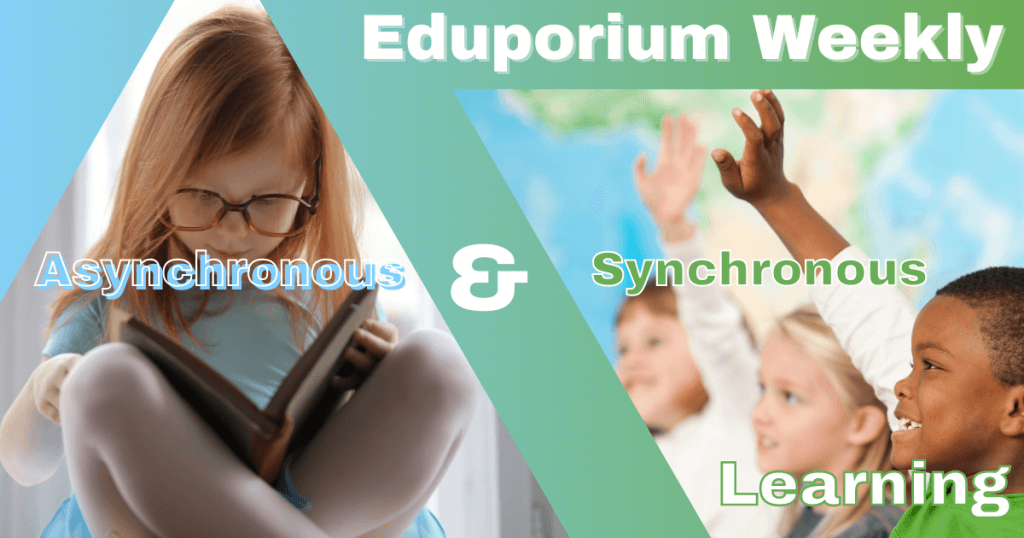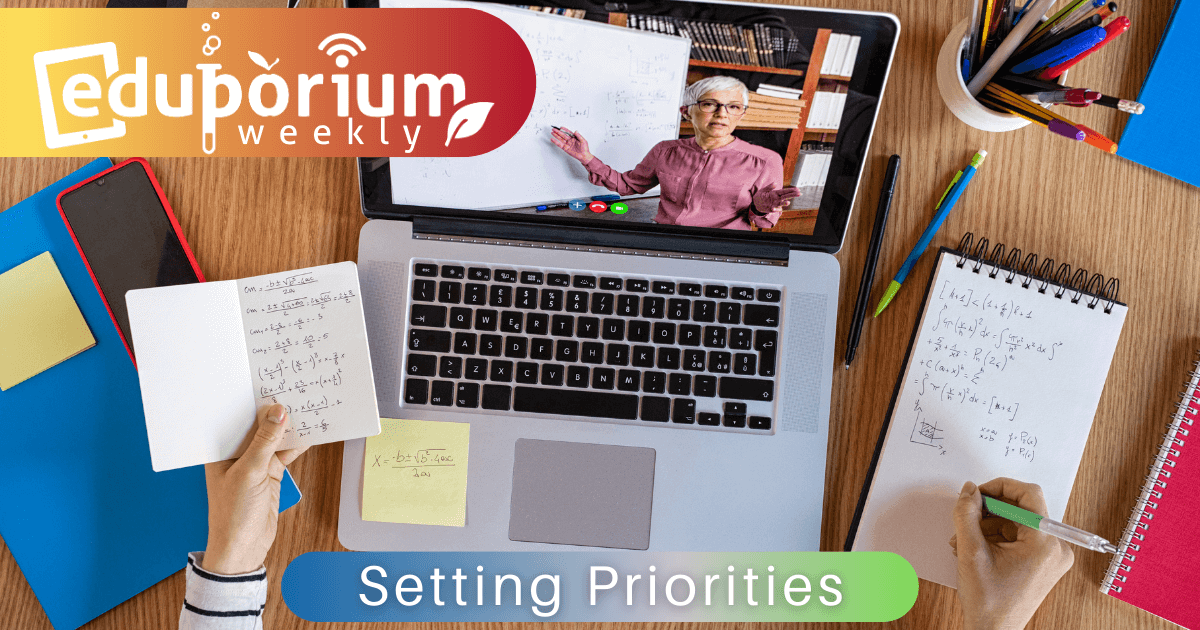Teachers and administrators have almost certainly felt pressure when it comes to remote learning. While some have gotten into a routine, it’s likely not been as smooth of a journey for all of them. Teachers are now regularly picking and choosing what they will focus on in their remote instruction. Since there is simply not enough time to cover all they normally would, prioritizing the most important items has become the norm. But, how are these priorities determined? Every educator has a different strategy and every student has a different set of needs that require support. Identifying their most pressing needs and still effectively educating them is the ideal balance, but that’s easier said than done.
Basic Priorities for Remote Learning
Some of the most important policies teachers can put in place are also some of the most basic. Going back to the beginning of remote learning, teacher expectations were all over the place. Now, they’re a bit more structured, but remain largely similar to what was discovered right off the bat. The top priority for many of them is helping their students get connected. Without devices and Internet access, there essentially is no remote learning. We also know, however, that reliable connectivity is far from a guarantee. Ideally, school or district leaders would be able to step up and provide each student with what they need to learn. This is also more easily said than done as potential workarounds have been tough to implement and utilize consistently.
The chance to learn more than content.
While educators naturally want to teach as much as possible, it’s also important for them to know when to take a step back. Especially in this climate, it's suboptimal to try to force meaningful learning. Taking time for everybody to mentally and emotionally regroup can be very helpful. At the same time, teachers have wanted to maintain those important connections with students, however. That’s why finding the right balance in remote learning—though seemingly simple—can be elusive. Taking time to pause can also help educators reflect on what students need. Some of them are likely facing struggles in remote learning and identifying skills they could work on developing to help stem these struggles could go a long way. Some of the most relevant remote learning skills are independence and self-motivation. Though it’s one more thing on everyone’s plates, remote learning actually presents an opportunity for students to develop these.
Scaling back vs. ramping up.
To that end, it’s also beneficial for teachers to understand more about how their students self-motivate. While they’ve scaled back expectations in most cases, students still have an opportunity to be productive. Though the social-emotional factors can make it hard on many students, harnessing those emotions in a positive way can be fruitful. And, while many educators have accepted this, it’s important to remember that distance learning isn’t going to be as good as classroom learning. The goal, then, is to make it as good as possible. Finally, as educators all continue to (hopefully) get a little more comfortable with distance learning, there should be more structure. Custom remote lesson plans are more common and hopefully there is less improvising going on as well. It may seem strange, but some of the most important remote learning priorities involve scaling back not ramping up.

Trauma-Informed Practices in Remote Learning
As if all other new buzzwords aren’t enough, the phrases ‘trauma’ or ‘trauma informed’ have been common in teachers’ worlds. This generally involves being aware of traumas students have faced—either in the past or more recently. Using this knowledge can greatly help educators shape their lessons, language, and relationship building efforts with students. In the pandemic era, trauma-informed teaching is, understandably, very prevalent. It’s not only students who have faced traumatic experiences, however. Teachers have had their worlds flipped upside down, too, and we know all too well how many of them are struggling with stress from being overworked, worrying about job security, and remaining isolated. That’s why using the experiences from the last year and harnessing trauma productively can actually be quite helpful.
What teachers can do for themselves.
After taking care of their own stress and emotions, educators can better focus on doing the same for their students. Setting up a virtual classroom that doubles as a welcoming environment is a great first step. Simple, visual elements placed in the home teaching spaces of educators can provide some normalcy for students. Seeing some of the same items they’ve seen on their teachers desk, for example, can create some comfort. As for what educators can do for themselves, the most important thing is to actively practice self-care. Teachers also shouldn’t have to feel pressure to become distance learning experts (if that even exists). Making it clear to students and parents that everyone will make mistakes along the way is important. And, so is asking for help to ensure you feel confident and comfortable with whatever changes next.
Strategies to build relationships.
From there, teachers can focus more on building and maintaining relationships with students—especially those who need connection and normalcy the most. This requires extra effort when done virtually, but teachers have found success with making that effort. Discovering student strengths and interests is often the best place to begin in building one-on-one relationships. Learning more about students also allows educators to offer more voice and choice in remote learning. Knowing what would benefit each student can go a long way towards helping them feel more empowered. That feeling of empowerment can then help turn trauma into opportunity. Simply by checking in with students, learning more about them, and letting go of some control, educators can maximize remote learning experiences and flip traumatic events in a positive way.
How Teachers Can Engage Students in Remote Learning
Assuming that everything goes as planned most of the time, there are additional strategies that allow educators to engage students. Let’s assume all technology is functioning, students have shown up, and there’s actually time to make an effort for engagement. Whenever possible, educators should strive to ensure remote learning doesn’t consist solely of them speaking. Engaging students builds trust and building trust often leads to enhanced participation. Teachers being present for their students (digitally) is so important and video is the best way to do so. Spending as much time as possible in live video meetings is helpful to a lot of students especially as trust is cemented over time. Video quality is also important and, though not something that needs to be forced, student video is preferred.
Active learning, but with breaks.
Although often crunched for time in shorter class meetings, student needs are still central. Building in a little bit of time or stopping periodically to ask if there are questions can really help. Some students may not know if it’s okay to raise their hand in these environments, for example, and ensuring they’re comfortable is key. Active learning is another strategy teachers can use—even in remote learning environments. This comes back to utilizing strategies other than lectures in synchronous remote learning. Infusing some of the normal elements of classroom learning, like discussions, can be more rewarding. In this case, discussions, group work, video snippets, and allowing time for quick breaks can help keep kids focused and engaged. Teachers can even coordinate with each other to potentially stagger class times so students can take breaks throughout the day.
Communication and technology tips.
Keeping communication with students clear and concise—especially outside of class meetings—is helpful. Putting those communications in one place (the same website or app) is also great for both students and parents. This allows for easy meeting launches and, potentially, continued group discussions once the meeting concludes. And, now for some other tips to keep engagement high. Investing in a wired headset can improve teacher sound quality on remote learning platforms. Wired Internet connections can also be stronger and, at times, more reliable. Also, if possible bandwidth wise, teachers can record live lessons and share them with students later on. This, of course, would allow them to look back on certain things. We know we might not be breaking any news for educators and, if you have some other creative tips for student engagement in remote learning, please feel free to drop them in the comments at the bottom!

Prioritizing Learning Goals
By now, many educators likely have an idea of what’s worked in remote learning and may be looking back on the things they’ve adapted from the classroom. One of the reasons for this—besides changing conditions—is that learning goals have also changed. Realistically, there is less expected from students due to the turbulence of remote learning, technology, and stressors. Examining how these goals have changed, what they are, and how they’re communicated to students remains important. Then, educators can prioritize these goals in order of importance for students. Teachers can adapt their lessons, live activities, and assignments to meet these goals. And, though it may be tough, educators can also abandon learning goals that are no longer feasible or relevant.
Determining distance learning goals.
In order to achieve specific remote learning goals, it often starts with clearly defining them. This helps many students internalize what they’re responsible for and stick to a timeline for completing them. Sharing the reasons behind why they’ve been assigned something is also beneficial for students. Clearly tying each assignment to some form of academic or personal benefit to them can be helpful. After creating a list of potential activities students could complete over the course of a two- or four-week period, for example, teachers can then prioritize these as well—also in terms of most important learning goals. Focusing on those that will help them build relevant skills is a good approach. And, if possible, try designing activities that are conducive to remote learning, inspire collaboration, and are tied to specific learning goals.
Setting expectations and fostering choice.
Once settled on activity ideas and learning goals, consider how it fits into remote learning. If educators want to highlight social-emotional connections, for example, they’d likely design something that allows students to draw on their own interests and passions. If collaboration is a key element, activities that can be completed by groups remotely would take priority. That’s not to say that learning goals have to be set in stone. They can change over time and evolve as student needs and teacher capabilities change. Setting learning goals in remote learning is simply a strategy to help give students something to target. When they know exactly what’s expected, how to get themselves there, and what tools to use, they tend to feel much more confident about making it happen.
Final Tips to Improve Remote Experiences
Most educators by now have probably gotten into a remote teaching routine. They’ve likely discovered what works and what doesn’t as well as how to interact with different groups of students. Many of them are also probably still hunting for ways to improve the process as a whole. It’s not just instructional time that could use some improvements either—something you probably already know. For today’s teachers, it’s all about engagement, feedback, positive attitudes, and taking care of themselves. To that end, it’s key for them to make sure they’re avoiding teacher burnout. Sharing the load by collaborating with other faculty members can go a long way in ensuring students still receive quality content in their instruction and all educators remain as healthy as possible.
Really understanding remote learning audiences.
Another remote teaching tip is for educators to get to really know their audience. For those who only have one set of students, this is easier. For teachers of multiple different classes, like high school educators, this is, of course, more challenging. On top of that, the audience in each video square on a teacher’s screen may be more than who they see. Students may have younger siblings in earshot or parents monitoring the instruction. Gaining a feel of each student’s situation could affect how teachers interact with them during group meetings or individually. This also involves doing whatever possible to cater to unique situations. If students struggle with staring at screens, for example, maybe there’s a screen-free alternative. Or, if their siblings are a factor, maybe their instruction can be asynchronous.
Collaboration and pressing forward.
Finally, when it comes to remote teaching, collaboration can be an educator’s best friend. More than likely, all teachers in a school are teaching in the same way. Things are being learned about technology, content delivery, and students themselves. Sharing these insights—whether in simple texts, emails, or in a community space—can be so helpful and, at the very least, offer a refreshing approach to try out. Plus, since we’re technically now in year two of remote learning, perhaps educators who taught certain students last year can provide help to those teaching him or her this time around. We know there are so many pieces of advice and helpful tools for educators to try in remote learning. Just remember to define your own priorities and maximize your efforts accordingly.
For the latest EdTech, STEM, and 21st century education news, follow us on Twitter and Instagram. Like us on Facebook, too, or sign up for our newsletter for our latest product announcements and offerings. If you have an idea for an Eduporium Weekly theme, send us a message on social media or comment below.



